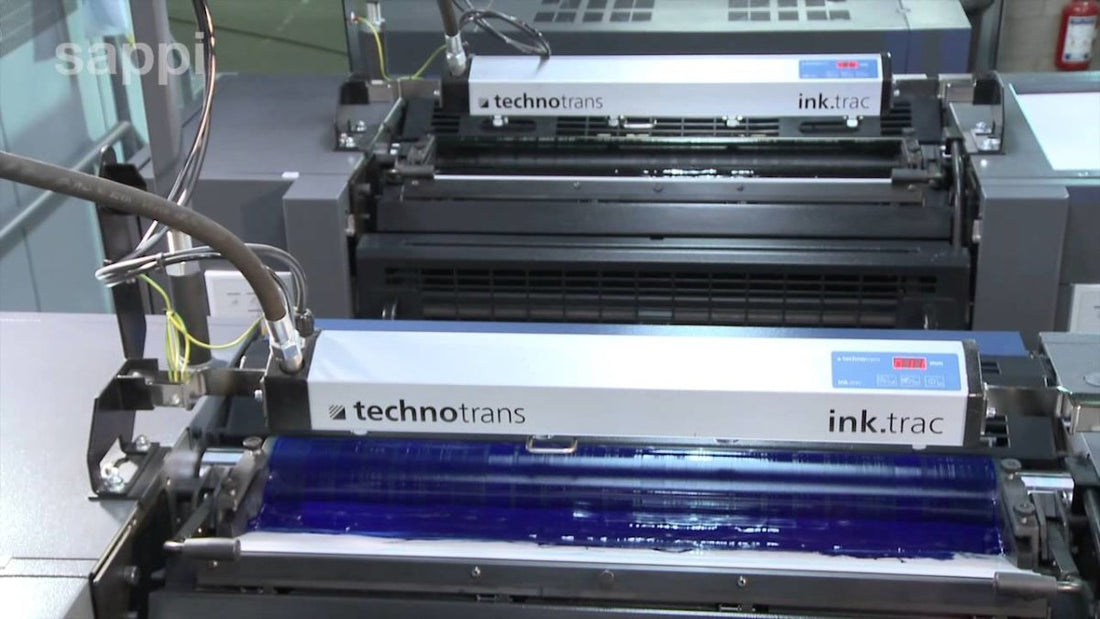
The Sheet-Fed Offset Printing Process
adminShare
Offset printing is our bread and butter here at Print Peppermint.
Whether we are doing 4-color process printing or 1 to 2 color spot color printing.
We, of course, do quite a bit of letterpress printing and dabble a bit in digital printing sometimes.
But since we are pretty busy and don't feel the need to reinvent the wheel we've reposted this awesome educational video on the offset printing process, presented by Sappi.
In case you don't have the time to watch the video and want to just quickly scan the transcript, you can have a read below. Thanks to our friends at SpeechPad for the audio transcription service.
Transcription:
Source: https://www.youtube.com/watch?v=RW1HJdW5XLs
A sheet-fed offset press consists of four main sections: the feeder and lay system, the printing units, the delivery system, and the control station.
The feeder and lay system ensures that once the pallet of paper has been loaded into the press, paper sheets are fed from the paper stack into the press one by one in exactly the same position.
The printing units each print a single color, on only one side of the paper. This press has 10 print units. The second set of five print towers has exactly the same function as the first, allowing both sides of the paper to be printed in one pass.
A perfecting cylinder between the first set of five units and the second set realigns the paper so that the reverse side is facing upwards. After they have passed through the print units, the delivery system stacks the printed sheets on the delivery board.
During the print run, the press operator takes sample sheets from the press and checks them at the control station. Let us look at the offset printing process in more detail on this five-color press.
Before the print run can start, the plates must be loaded into the print units. Extreme care is needed because even small scratches on the plates would be visible in the printed image.
All the color separation plates must be in accurate register with each other and every plate has register holes to locate it precisely on both the plate-setter and now on the printing press. The printing plate is automatically wrapped onto the plate cylinder, pressing against the rubber blanket cylinder.
The print units in the press are supplied with ink via a piped distribution system from a central ink reservoir. Modern vegetable oil-based printing inks are environmentally sustainable and contain only biological solvents, rather than the mineral oils found in traditional inks.
The first four-color print units are loaded evenly with ink in the order: black, cyan, magenta, and yellow. Individual colors or vanishes, maybe mixed by hand on the fifth unit. Certain areas of the artwork have more intense color than others and the press software has determined that more or less ink must be supplied to each duct across the ink rollers.
The print unit automatically adjusts for this for each color and the run is ready to start. The pallet of paper is loaded into the press, and carefully aligned with the feeder system. Air-blast and suction devices separate the sheets from a stack and feed them into the press one at a time. Double sheet detectors measure sheet thickness, stopping the paper feed to avoid a paper jam if two sheets stick together. Two front lays ensure that each sheet is accurately and consistently positioned as it enters the press.
The corresponding side lays push each sheet sideways into the exact same position to ensure perfect register. Grippers, mechanical 'fingers,' now pull the sheet into the first printing unit. Further grippers, seen here in setup mode, feed the paper sheets through the press and the four-color printed image builds on the paper.
Finally, the gripper system pulls the sheets into the delivery section and stacks them. At this point, the ink is still wet, which might cause the sheets to stick together or smudge if handled roughly. To avoid this, "anti set-off" powder is sprayed onto the sheets before they are stacked. Specially formulated rapid-set inks and papers useless anti-set-off powder and allow the sheets to be handled and finished straight off the press.
While the first sheets are being printed, an automatic scanner checks the registration and color saturation. Although the plates are mounted very accurately on register pins, they may still need fine adjustment to be perfectly aligned.
The press automatically corrects this, and the operator can also make fine adjustments on the control panel. The press operator takes samples to confirm correct color and register throughout the run. The final stage of the print run is to collate the different sheets together, bind them, and cut them to size.
Sheet paper is supplied to the printer in standard sizes, and if necessary, a guillotine is used to cut the printed sheets to the customer's required dimensions. Books and magazines are folded into sets of DIN A4 pages called 'signatures,' which contain the pages in the correct order, but not yet cut or bound.
The stitcher-gatherer assembles the different signatures in the right page sequence, together with a cover sheet. Each assembled set of pages is then stitched or stapled together and cut to the final size to create the finished publication.
Let us know if any of these concepts were hard to understand in the comments below and we will try to explain them in a different way.


